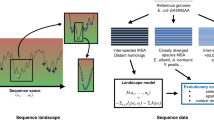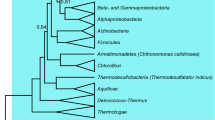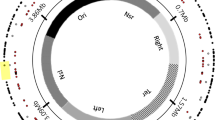Abstract
VARIOUS neutral models have been proposed to account for the observed levels of enzyme polymorphism in natural populations1–5. One such model, the charge-state or ladder-rung model2, has been suggested to be appropriate for the available electrophoretic data. The model assumes that the only amino acid substitutions detectable by electrophoresis would involve unit charge changes—substitution of a charged for an uncharged residue—and because of charge redundancy alleles would fall into phenotypic classes of equal net charge3,4. Thus an electrophoretic variant would be a heterogeneous molecular entity, rather than the product of a unique allele. It was proposed that these charge classes would be evenly spaced in electrophoretic mobility, because unit charge changes would be reflected as unit jumps in mobility, but Johnson6 has questioned this on the grounds that no two charged group substitutions should result in identical net charge changes. He argued that there would be no charge redundancy and that there would be a continuum of charged variants. It was also recognised that while many substitutions involving uncharged residues would probably go undetected, some could cause conformational changes which would be resolved by electrophoresis. This concern has been borne out by the electrophoretic data: although many enzymes fit the expectations for neutral alleles contingent on the charge-state model7,8, others, including some esterases, do not. The mobilities of variants of these esterases are not evenly spaced, and rare variants are often observed at intermediate as well as extreme electrophoretic mobilities. These characteristics have been attributed to the presence of conformation, as well as charge, variability. We have investigated the relative importance of charge and conformational change in producing electrophoretic variation by examining variants at the Est-5 locus of Drosophila pseudoobscura by isoelectric focusing; this allows charge balance to be examined in the absence of conformational variation. The results indicate that while the observed charge changes fit a charge-state model, conformational differences exist which may account for a substantial amount of the additional variation revealed at this locus by conventional electrophoresis.
This is a preview of subscription content, access via your institution
Access options
Subscribe to this journal
Receive 51 print issues and online access
$199.00 per year
only $3.90 per issue
Buy this article
- Purchase on Springer Link
- Instant access to full article PDF
Prices may be subject to local taxes which are calculated during checkout
Similar content being viewed by others
References
Kimura, M. & Crow, J. F. Genetics 49, 725–738 (1964).
Ohta, T. & Kimura, M. Genet. Res. 22, 201–204 (1973).
King, J. L. Genetics 76, 607–613 (1974).
King, J. L. & Ohta, T. Genetics 79, 681–691 (1975).
Brown, A. H. D., Marshall, D. R. & Albecht, L. Genet. Res. 25, 137–143 (1975).
Johnson, G. B. Genetics 78, 771–776 (1974).
Bulmer, M. G. Nature 234, 410–411 (1971).
Richardson, R. H. & Smouse, P. E. Biochem. Genet. 14, 447–466 (1976).
Lewontin, R. C. & Hubby, J. L. Genetics 54, 595–609 (1966).
Prakash, S., Lewontin, R. C. & Hubby, J. L. Genetics 61, 841–858 (1969).
McDowell, R. E. & Prakash, S. Proc. natn. Acad. Sci. U.S.A. 73, 4150–4153 (1976).
Cobbs, G. Genetics 82, 53–62 (1976).
Coyne, J. A., Lewontin, R. C. & Felton, A. A. Proc. natn. Acad. Sci. U.S.A. (in the press).
Johnson, G. B. Genetics 87, 139–157 (1977).
Cobbs, G. & Prakash, S. Genetics 87, 717–742 (1977).
Prakash, S. Evolution 31, 14–23 (1977).
Vesterberg, O. Biochim. biophys. Acta 257, 11–19 (1972).
Author information
Authors and Affiliations
Rights and permissions
About this article
Cite this article
RAMSHAW, J., EANES, W. Study of the charge-state model for electrophoretic variation using isoelectric focusing of esterase-5 from Drosophila pseudoobscura. Nature 275, 68–70 (1978). https://doi.org/10.1038/275068a0
Received:
Accepted:
Issue Date:
DOI: https://doi.org/10.1038/275068a0
This article is cited by
-
The separation of whale myoglobins with two-dimensional electrophoresis
Biochemical Genetics (1988)
-
The separation of whale myoglobins with two-dimensional electrophoresis
Biochemical Genetics (1988)
-
Macromolecular interaction and the electrophoretic mobility of esterase-5 from Drosophila pseudoobscura
Biochemical Genetics (1987)
-
The sensitivity of isoelectric focusing and electrophoresis in the detection of sequence differences in proteins
Biochemical Genetics (1986)
-
Muscle esterase variation and size variation in the sand launce Ammodytes dubius
Marine Biology (1985)
Comments
By submitting a comment you agree to abide by our Terms and Community Guidelines. If you find something abusive or that does not comply with our terms or guidelines please flag it as inappropriate.



